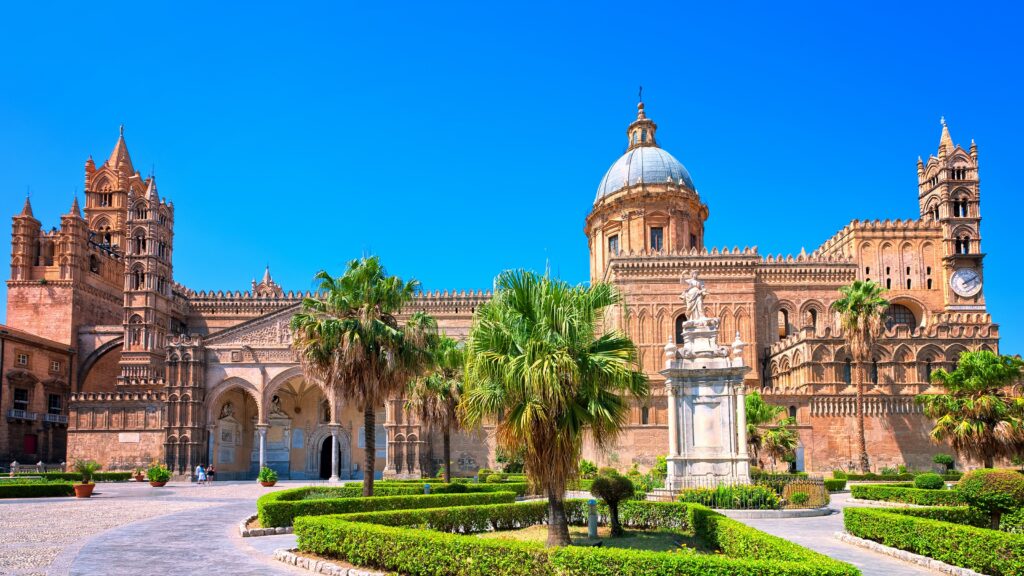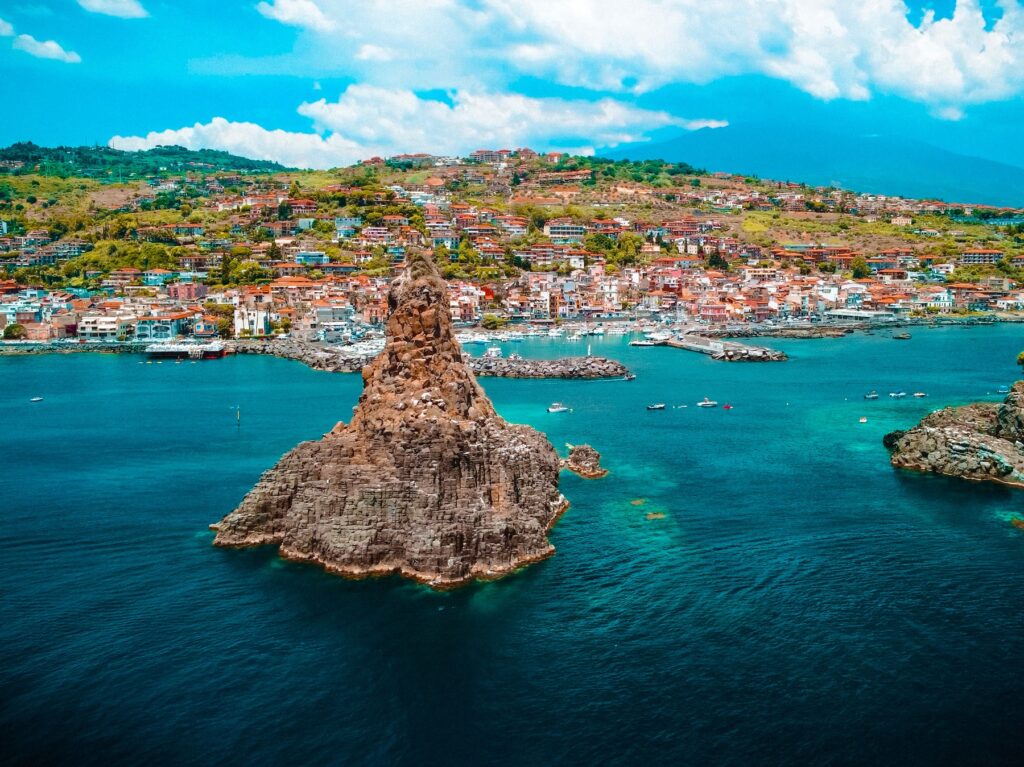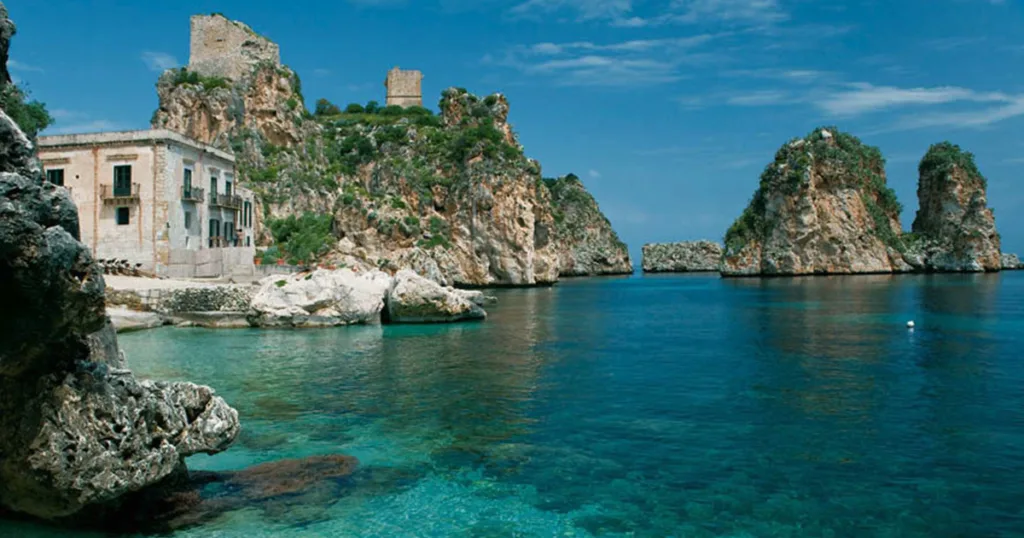Palermo, Sicily is a city where history, food, and culture collide in a vibrant mix. Bustling markets, golden mosaics, and lively streets give Palermo its unforgettable charm. This extended guide takes you through the best things to do, local traditions, food highlights, day trips, and practical tips for your trip.

Table of Contents
ToggleReasons to Visit Palermo
Palermo offers a unique blend of Arab-Norman heritage, Baroque piazzas, and some of the most famous street food in Europe. The city is part of a UNESCO World Heritage site, with monuments that merge Latin, Byzantine, and Islamic styles. Add lively markets, nearby beaches, and easy day trips, and you have the perfect Mediterranean getaway. Elegant palaces sit next to noisy markets, and centuries-old churches stand close to modern cafés. This contrast is what makes Palermo exciting—every corner reveals something unexpected.
Palermo is also Sicily’s capital and largest city, with around 650,000 residents. Its energy comes from its mix of cultures, from Phoenicians and Greeks to Arabs, Normans, and Spaniards. This long history has shaped not only the architecture but also the cuisine, traditions, and language.
Top Things to Do in Palermo
Religious Monuments
Palermo Cathedral: A mix of Norman and Baroque styles, with tombs of kings and emperors. Visit the treasury and crypt, and climb the rooftops with a Monumental Area + Rooftops ticket for sweeping views.
Norman Palace and Palatine Chapel: Home to dazzling gold mosaics that merge Western, Byzantine, and Islamic artistry. A UNESCO highlight that demonstrates the richness of Palermo’s multicultural past.
San Cataldo and La Martorana: Both UNESCO-listed, known for striking mosaics and Arab-Norman architecture. Their red domes and colorful interiors are unforgettable.
Santa Maria dello Spasimo: A roofless Gothic church often used for concerts and cultural events, creating a magical atmosphere under the open sky.
Cultural Icons
Teatro Massimo: The largest opera house in Italy and third-largest in Europe. Guided tours cover the grand auditorium and backstage areas; performances are unforgettable.
Quattro Canti and Fontana Pretoria: A symbolic Baroque crossroads paired with an ornate fountain decorated with mythological figures. This is the heart of Palermo’s historic center.
Markets
Ballarò: Lively and traditional, full of fresh produce, spices, and street food. It’s the place to experience the rhythm of daily life.
Capo: Known for fish stalls, seasonal fruits, and fried snacks. Narrow streets create a colorful and fragrant maze.
Vucciria: Quieter during the day, buzzing with bars and nightlife after dark. Once a food market, it now symbolizes Palermo’s youthful energy.
Unique Sights
Capuchin Catacombs: Corridors lined with thousands of mummified remains. Fascinating but eerie, they reflect a unique local tradition. No photography is allowed.
Mondello Beach: White sand and turquoise water just outside the city. A favorite with locals in summer, perfect for swimming and sunbathing.
Museums
Regional Archaeological Museum Antonio Salinas: Holds one of Italy’s most important collections of Greek and Roman artifacts.
Modern Art Gallery (GAM): Features 19th- and 20th-century works in a restored convent.
Antonio Pasqualino International Puppet Museum: Celebrates Sicily’s puppet-theatre tradition and puppetry from around the world.
Palermo Street Food
Palermo is one of Europe’s street food capitals. Eating here is about taste, tradition, and social life.
Arancine: Rice balls filled with ragù, ham, or mozzarella.
Panelle and Crocchè: Chickpea fritters and potato croquettes served in bread.
Sfincione: Fluffy Sicilian pizza topped with onions, tomato, and caciocavallo cheese.
Pane cà meusa: A bold specialty—spleen and lung in a bun, plain (schettu) or with cheese (maritatu).
Cannoli: Crisp pastry tubes with sweet ricotta cream.
Granita: A refreshing icy dessert, ideal on hot days.
Each dish reflects Palermo’s history of blending cultures, from Arab spices to Norman tastes. Food tours are popular and help visitors dive deeper into the traditions behind the flavors.
Events and Traditions
Festino di Santa Rosalia
Every July, Palermo honors its patron saint with the Festino di Santa Rosalia. A grand procession, fireworks, concerts, and street parties fill the streets with joy and devotion, making it the city’s most important annual celebration.
Other Local Celebrations
Carnival: Colorful parades and costumes before Lent.
Christmas Markets: Festive lights, nativity scenes, and stalls in December.
Easter Processions: Traditional religious events with deep community participation.
Where to Stay in Palermo
Centro Storico: For history, monuments, and nightlife.
Kalsa: Artistic and bohemian, near the waterfront.
Politeama and Libertà: Modern areas with shops, theaters, and restaurants.
Mondello: For beach lovers seeking sun and sea.
Near the Station: Budget-friendly and practical for train travel.
Each neighborhood offers a different atmosphere, so choose based on your interests.
Top Rated Hotels in Palermo
🔍Bastione Spasimo Boutique Hotel — 9.4/10 (≈1,016 reviews)
Boutique hotel with courtyard and pool. Guests highlight the friendly staff, excellent breakfast, and peaceful location.🔍Casa Nostra Boutique Hotel & Spa — 9.3/10 (≈1,328 reviews)
Stylish boutique stay with spa facilities. Guests praise the central location, spotless rooms, and welcoming atmosphere.🔍Grand Hotel Et Des Palmes — 9.0/10 (≈1,204 reviews)
Historic luxury hotel near Teatro Massimo. Guests love the elegant building, attentive staff, and generous breakfast.🔍Palazzo Natoli Boutique Hotel — 9.3/10 (≈469 reviews)
Elegant boutique property close to main attractions. Guests mention the helpful staff, fresh breakfast, and comfortable rooms.🔍Palazzo Cartari — 9.4/10 (≈494 reviews)
Renovated palazzo with modern design. Guests note the excellent service, cleanliness, and convenient location.
Top Rated Villas in Palermo
🔍Eccelso Case Vacanza — 9.8/10 (43 reviews)
Modern and spotless villas in a central location. Guests praise the easy check-in and very friendly staff.🔍Suites Santa Cecilia — 9.6/10 (14 reviews)
New, well-equipped villas with balconies near the historic center. Guests highlight the cleanliness and helpful hosts.🔍Pupa Ru Capu — 9.4/10 (24 reviews)
Stylish vacation home in a quiet yet central spot. Guests mention the modern design and responsive owner.🔍Residenza Ximenes Hub — 9.2/10 (49 reviews)
Refurbished villas in a calm neighborhood close to the center. Guests note the top cleanliness and welcoming atmosphere.🔍Domus Orestea Luxury Suites — 9.1/10 (239 reviews)
Villa-style suites with garden and pool near Mondello. Guests love the relaxing setting and attentive hosts.
Top Rated Apartments in Palermo
🔍Sofia’s Central Apartment Palermo — 9.7/10 (≈182 reviews)
Modern and spotless apartment near the Cathedral. Guests highlight the attentive host and well-equipped kitchen.🔍Le Porte del Kassaro — 9.7/10 (≈176 reviews)
Beautifully decorated flat in the historic center. Guests praise the quiet yet central location and responsive owner.🔍Zahir Suite Apartment — 9.7/10 (≈131 reviews)
Clean and stylish suite close to main sights. Guests note the period details, small kitchen, and helpful host.🔍Casta Diva Luxury Apartments – Self check-in — 9.6/10 (≈322 reviews)
Elegant self-check-in apartments with modern design. Guests appreciate the comfort and consistently high standards.🔍Calderai 82 Suites 1 e 2 — 9.4/10 (≈167 reviews)
Contemporary apartments near Fontana Pretoria. Guests mention the great comfort and very supportive host.
Getting There and Around
Palermo Airport Train
Falcone–Borsellino Airport (PMO) connects to Palermo Centrale by train. The station is in the terminal basement (level −1). Trains depart about every 30 minutes, with a journey time of 34–50 minutes.
Public Transport
AMAT runs buses and trams. A single ticket lasts 90 minutes; day passes are available. Trams are modern and useful for reaching outer districts.
ZTL (Restricted Traffic Zone)
Driving in central Palermo is limited by ZTL rules, enforced by cameras. Unauthorized entry results in fines. Ask your hotel about parking and passes. Parking outside the zone and walking in is often easier.
Walking and Cycling
Many attractions are within walking distance. Palermo is increasingly bike-friendly, with rental options and guided bike tours available. Walking is the best way to soak up the city’s atmosphere.
Day Trips from Palermo
Monreale Cathedral
Just outside Palermo, Monreale is famous for its cathedral covered in golden mosaics. The cloister, with elegant columns and carved capitals, is equally breathtaking. From the terrace, enjoy panoramic views of the Conca d’Oro valley.
Cefalù
An hour by train, Cefalù offers sandy beaches, medieval streets, and a Norman cathedral with shimmering mosaics. Climb La Rocca for panoramic views across the town and sea. It’s perfect for combining culture and relaxation.
Other Excursions
Bagheria: Known for its Baroque villas, once summer homes of Palermo’s nobility.
Capo Gallo Nature Reserve: A coastal park ideal for hiking, swimming, and birdwatching.
Ustica Island: A volcanic island north of Palermo, famous for diving and snorkeling in crystal-clear waters.
Best Time to Visit
Spring (April–June) and autumn (September–October) bring mild weather and fewer crowds. Summer (July–August) is hot but lively, especially with the Santa Rosalia festival. Winter is mild, cheaper, and ideal for cultural trips. If you enjoy festivals, plan around July for the Festino or December for Christmas events.
Practical Tips
Dress codes: Cover shoulders and knees in churches.
Safety: Pickpockets can appear in crowded markets and public transport.
Money: Many vendors prefer cash, though ATMs are common.
Language: Italian is dominant, but some English is spoken in tourist areas.
Tipping: Round up the bill if service is not already included.
Opening hours: Some attractions close midday; check in advance.
Local etiquette: Greet shopkeepers when entering, even with a simple “buongiorno.”
FAQs
How many days do you need in Palermo?
Two to three days cover the highlights. Add extra days for Monreale, Cefalù, or Ustica.
Is Palermo safe?
Yes, but take care in crowded areas. Keep belongings close and avoid unlit alleys at night.
Can you get to Palermo by train from the airport?
Yes, trains connect the airport to Palermo Centrale in 34–50 minutes.
Are the markets open at night?
Ballarò and Capo are daytime markets; Vucciria becomes lively after dark.
Can you climb Palermo Cathedral rooftops?
Yes, but rooftops require a paid Monumental Area + Rooftops ticket.
Are photos allowed in the Capuchin Catacombs?
No, photography is prohibited.
What is Palermo famous for?
Arab-Norman architecture, vibrant street food, and lively markets.
What is the best way to get around Palermo?
Walking covers most attractions; for longer trips, use trams, buses, or taxis.
What beaches are near Palermo?
Mondello is the closest, but Capo Gallo and Cefalù are also excellent options.
Conclusion
Palermo, Sicily is a city of contrasts—golden mosaics, chaotic markets, sandy beaches, and vibrant festivals. From Arab-Norman cathedrals to late-night food stalls, Palermo offers experiences you won’t find anywhere else. Whether you are here for culture, food, or relaxation, this city will stay in your memory. Start planning your journey and discover the energy of Sicily’s capital.
Disclosure: This page may contain affiliate links. This means that we get a small commission from any purchase you make, at no additional cost to you!

